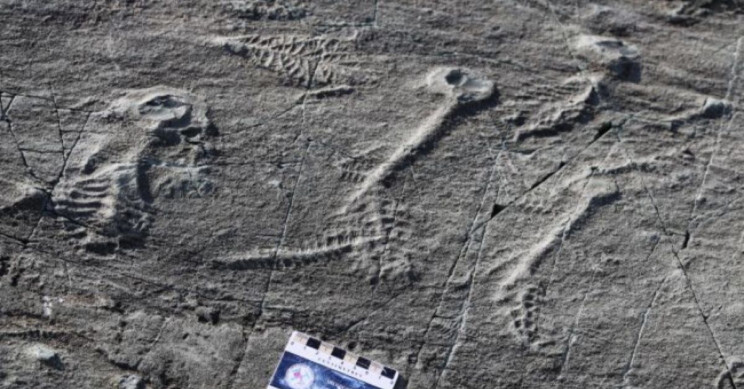Researchers from the University of Cambridge discovered intact fossils on the coast of Newfoundland, Canada.
Some of Earth’s earliest animals may have used “social networks” to communicate, share information about food, and even clone themselves.
Scientists from the University of Cambridge and Oxford observed that these mini fern-like creatures based on the ocean floor around 571 million to 541 million years ago, appeared to be interconnected through a long, string-like filament. It’s the first time such a filament is discovered in such old fossils.
Their findings were published in Current Biology on Thursday.
Connected sea animals
These bizarre sea animals are called rangeomorphs, and the hundreds of these rangeomorphs that the scientists looked at were along the coast of Newfoundland, Canada.
Upon close inspection, the team discovered that these fossils were connected through thin filaments that ranged from just a few inches long to 13 feet (4 meters) in length, and connected seven different species of rangeomorphs. Lead author of the study, Alexander Liu from the University of Cambridge, called this formation a “social network.”
Liu stated that “These organisms seem to have been able to quickly colonize the seafloor, and we often see one dominant species on these fossil beds. These filaments may explain how they were able to do that.”
What are rangeomorphs?
These mini sea-dwelling animals are some of the earliest known nonmicroscopic animals to be found on Earth. They spread in huge numbers during the Ediacaran period, meaning about 635 million to 541 million years ago. They have no noticeable mouths, guts, reproductive organs, or means of moving.
Scientists have believed that rangeomorphs suck up nutrients from the surrounding water through their leaf-like branches. As these creatures rarely moved around, their fossils have remained incredibly intact, especially off the coast of Newfoundland, where the scientists carried out their surveys.
The role of the filaments, however, still remains a mystery. Liu and his team hypothesize that they may have helped the rangeomorphs stay stable in the strong currents. Alternatively, they may have served as a way for the animals to transfer nutrients amongst themselves. Another thought is that the filaments assisted in cloning the animals in a kind of asexual reproduction system.
Further study of the rangeomorphs is required as it seems their “social network” is encrypted.













![Hotstar Premium Cookies 2019 [*100% Working & Daily Updated*] Hotstar Premium Cookies 2019 [*100% Working & Daily Updated*]](https://tahav.com/wp-content/uploads/2019/11/Hotstar-Premium-Cookies-Free-100x70.jpg)



